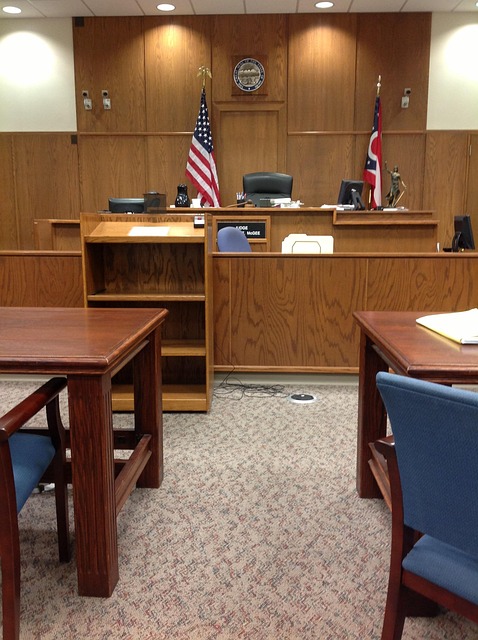Mail wire fraud, a complex cross-state electronic fund transfer crime, requires understanding the differences between administrative and civil proceedings for effective defense strategies. While administrative processes focus on regulatory adherence and deterrence through agencies like the SEC or USPS, civil actions aim for monetary redress driven by private parties affected by the fraud. Recognizing these nuances is crucial for law enforcement and legal experts to navigate through investigative, enforcement, and legal stages, ensuring robust defenses against mail wire fraud.
Mail wire fraud, a sophisticated form of cybercrime, involves the unauthorized transfer of funds through deceptive communication. This article provides a comprehensive overview of mail wire fraud, delving into its understanding, legal prosecution, and defense strategies. We explore key differences between administrative proceedings and civil lawsuits, breaking down essential elements, evidence requirements, and common misconceptions. By understanding these distinctions, individuals can better navigate potential risks and protect themselves from such fraudulent schemes.
- Understanding Mail Wire Fraud: A Comprehensive Overview
- Administrative Proceedings vs Civil Lawsuits: Key Distinctions
- The Elements of a Mail Wire Fraud Case
- Evidence and Legal Requirements for Prosecution
- Defense Strategies and Common Misconceptions
Understanding Mail Wire Fraud: A Comprehensive Overview

Mail wire fraud is a sophisticated crime that involves manipulating electronic funds transfer systems to defraud individuals and businesses. Understanding this type of fraud requires a grasp of its various forms, such as phishing scams, identity theft, and sophisticated hacking techniques. Unlike traditional financial crimes, mail wire fraud often operates across state lines, making it a federal offense. The differences between administrative and civil proceedings play a crucial role in how these cases are handled, with the former focusing on regulatory compliance and the latter seeking monetary damages.
The investigative and enforcement process for mail wire fraud involves multiple stages, from initial detection to trial. Corporate and individual clients alike can be affected, necessitating a robust general criminal defense strategy. Understanding the nuances of this crime is essential for both law enforcement agencies and legal professionals navigating the complex landscape of all stages of the investigative and enforcement process.
Administrative Proceedings vs Civil Lawsuits: Key Distinctions

When addressing mail wire fraud cases, understanding the nuances between administrative proceedings and civil lawsuits is paramount. While both are legal tools used to enforce justice, they significantly differ in their objectives and procedures. Administrative Proceedings focus on regulatory enforcement, aiming to deter future violations by imposing sanctions or requiring compliance with specific laws, regulations, or policies. These processes often involve government agencies like the Securities and Exchange Commission (SEC) or postal authorities, who investigate and take action against individuals or entities suspected of misconduct.
In contrast, Civil Lawsuits primarily seek monetary compensation for damages caused by a defendant’s actions. Filled in courts by victims or their legal representatives, these lawsuits allege negligence, intentional wrongdoing, or breach of contract. Unlike administrative proceedings, civil lawsuits are driven by private parties and the impact on individuals or organizations directly affected by the fraud. Across the country, both types of proceedings play a crucial role in combating white-collar and economic crimes, but they operate within distinct legal frameworks, reflecting the diverse needs of philanthropic and political communities grappling with these complex issues.
The Elements of a Mail Wire Fraud Case

Mail Wire Fraud is a complex crime that involves sophisticated schemes designed to defraud individuals or businesses through deceptive means. To establish a case, several key elements must be present. First, there needs to be evidence of a fraudulent intent, often concealed within complex financial transactions or false communications. This may involve the use of manipulated documents or digital communication to mislead recipients into making unauthorized transfers. Additionally, prosecutors must demonstrate that the accused individual or entity had knowledge of the fraudulent nature of their actions, a crucial distinction in both administrative and civil proceedings.
Understanding the differences between these legal contexts is essential when crafting a winning challenging defense verdict. While general criminal defense strategies may apply, white-collar and economic crimes cases often require a nuanced approach. In terms of strategy, focusing on exposing any discrepancies or lack of intent can be beneficial for building a robust defense. This is particularly relevant in navigating the intricacies of mail wire fraud cases, ensuring that the rights of the accused are protected throughout the process.
Evidence and Legal Requirements for Prosecution

In mail wire fraud cases, evidence collection is paramount for successful prosecution. This includes digital footprints left behind by the perpetrator, such as emails, phone records, and financial transactions. Forensics experts play a crucial role in uncovering this evidence, which must be admissible in court to ensure justice. The differences between administrative and civil proceedings are notable here; while both aim to penalize wrongdoers, they have distinct legal requirements. In administrative cases, the focus is on regulatory compliance, with agencies like the USPS or federal prosecutors leading the charge. They need to demonstrate a violation of specific regulations related to mail fraud.
In contrast, civil proceedings involve private parties suing for damages. Here, the bar for evidence is higher; plaintiffs must prove their case beyond a reasonable doubt. This distinction is significant in terms of white-collar and economic crimes, as it influences strategies for defense and potential outcomes. Achieving extraordinary results in these cases often hinges on robust legal representation that understands these nuances, ensuring a complete dismissal of all charges or mitigating penalties through effective argumentation and evidence presentation.
Defense Strategies and Common Misconceptions

Mail wire fraud cases often bring about unique challenges for both defendants and legal professionals. One common misconception is that navigating these issues involves solely criminal proceedings. However, it’s crucial to understand the distinctions between administrative and civil lawsuits. While criminal charges focus on punishment and incarceration, civil litigation aims to determine liability and provide compensation. This is where many get it wrong; they assume a criminal conviction guarantees a complete dismissal of all charges in related civil cases. The reality is far more nuanced.
Defendants accused of mail wire fraud must employ robust defense strategies tailored to both contexts. For his clients’ protection, legal teams should scrutinize the evidence, challenge procedural errors, and highlight any lack of intent or knowledge—key factors that can lead to a complete dismissal of all charges across the country. Effective representation involves strategic decision-making that accounts for these differences, ensuring the best possible outcome in both administrative and civil proceedings.
Mail wire fraud, a sophisticated and insidious crime, requires a meticulous legal approach. Understanding the nuances of administrative proceedings versus civil lawsuits is key in navigating these complex cases. While both avenues have distinct characteristics, each plays a crucial role in combating fraud. By recognizing the elements, evidence requirements, and defense strategies, legal professionals can effectively prosecute mail wire fraud, ensuring justice for victims and upholding the integrity of our financial systems. This comprehensive overview highlights the critical differences between administrative and civil proceedings, empowering readers to navigate this landscape with confidence.






